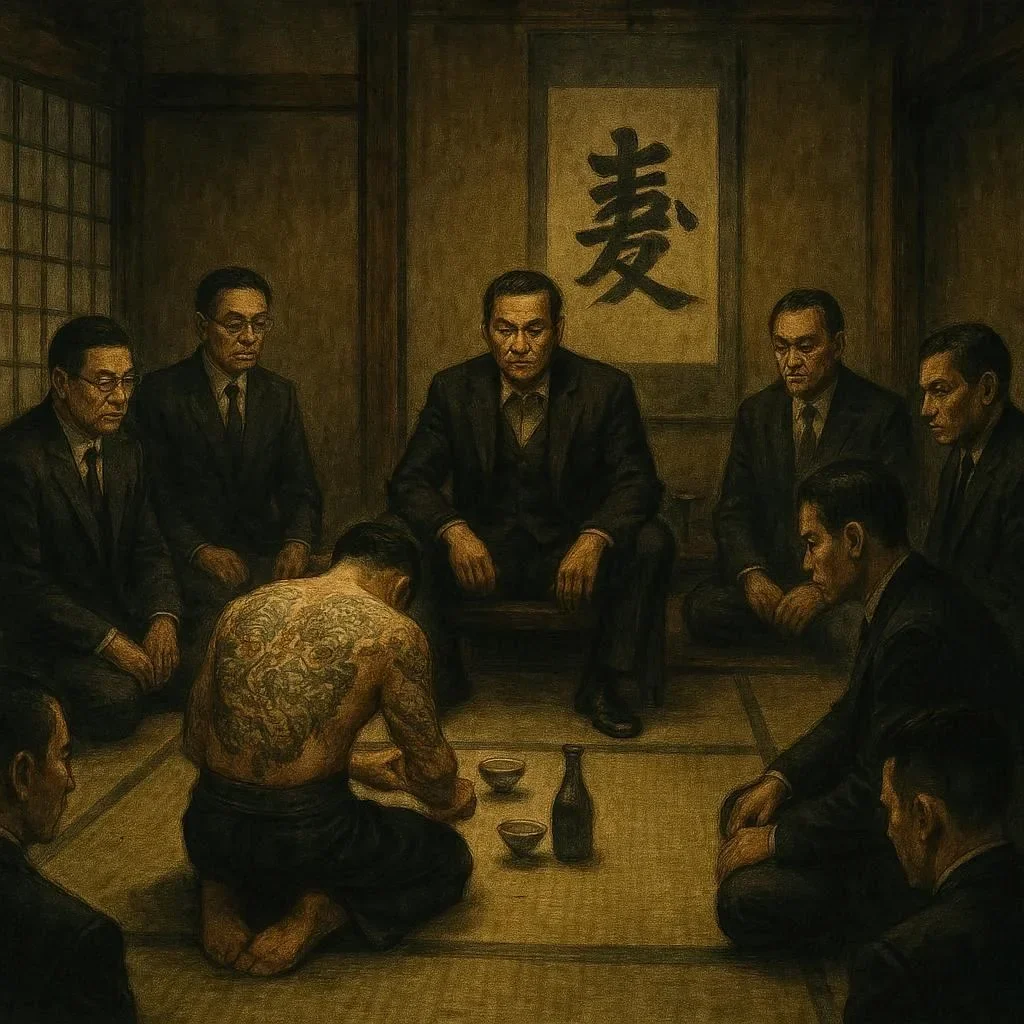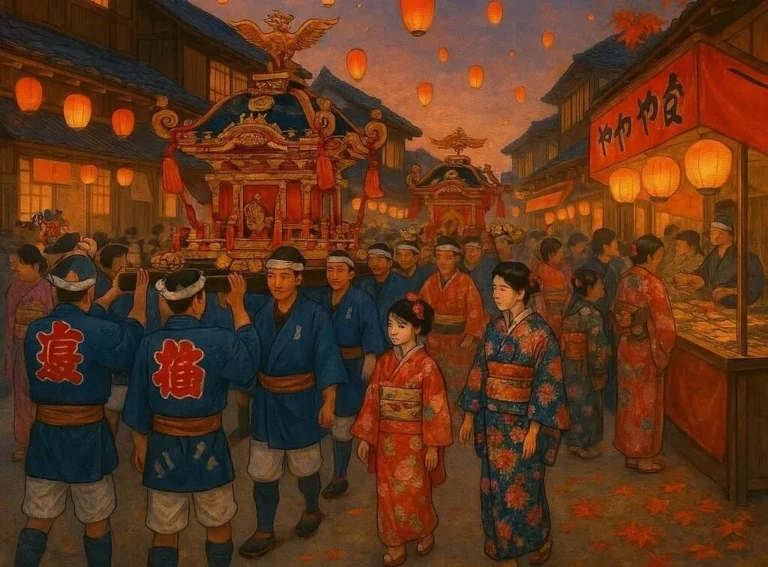505 views The Hidden Power Structures of Japan’s Yakuza Clans
The Yakuza, often portrayed in popular media as Japan’s notorious underworld syndicates, are far more complex than the typical portrayals suggest. While their activities have historically included organized crime, extortion, and illegal enterprises, the Yakuza clans operate within a highly structured and hierarchical system that is deeply rooted in Japanese history and culture. This blog post delves into the intricate power structures of Japan’s Yakuza clans, exploring their origins, internal hierarchies, codes of conduct, and their influence on both the criminal underworld and mainstream society.
The Historical Roots of the Yakuza
The origins of the Yakuza can be traced back to the Edo period (1603–1868), when Japan was ruled by the Tokugawa shogunate. During this time, the country was divided into strict social classes, with the samurai at the top and merchants and artisans at the bottom. The Yakuza emerged from two main groups: the *tekiya* and the *bakuto*.
The *tekiya* were itinerant peddlers and gamblers who operated outside the rigid social hierarchy. They were known for their toughness and their willingness to take risks, and they often formed loose associations to protect their interests. The *bakuto*, on the other hand, were gamblers who organized illegal games and developed a code of honor that emphasized loyalty and reciprocity.
Over time, these groups coalesced into the modern Yakuza, a term that is derived from the Japanese card game *Oicho-Kabu*. In this game, the worst possible hand is an eighth (*ya*), ninth (*ku*), and three (*za*), which is where the term ‘Yakuza’ originates. This name reflects the Yakuza’s origins as outcasts and misfits, operating on the fringes of society.
The Hierarchical Structure of Yakuza Clans
The Yakuza clans operate within a strict hierarchical structure that mirrors the feudal system of old Japan. At the top of the hierarchy is the *oyabun* (father figure), who serves as the leader of the clan. The *oyabun* is responsible for making major decisions, resolving disputes, and maintaining the overall direction of the clan. Below the *oyabun* are the *so-honbucho* (senior managing directors), who oversee the day-to-day operations of the clan and manage its various enterprises.
Next in the hierarchy are the *wakagashira* (young heads), who are responsible for leading smaller factions within the clan. These individuals often have their own loyal followers, known as *kumi-cho* (group leaders), who manage specific aspects of the clan’s operations, such as extortion, gambling, or drug trafficking. At the bottom of the hierarchy are the *kobun* (child figures), who are the lowest-ranking members of the clan. These individuals are responsible for carrying out the day-to-day tasks assigned to them by their superiors.
The Yakuza’s hierarchical structure is reinforced by a strict code of loyalty and respect. Members are expected to show deference to their superiors at all times, and any sign of disrespect can result in severe punishment. This code of conduct is rooted in the concept of *giri* (duty), which emphasizes the importance of fulfilling one’s obligations and maintaining honor.
The Role of the Yakuza in Modern Japan
Despite their criminal activities, the Yakuza have traditionally played a significant role in Japanese society. In some cases, they have even been called upon to provide assistance during times of crisis. For example, following the Tohoku earthquake and tsunami in 2011, Yakuza members were among the first to provide aid to affected communities, distributing food, water, and other supplies.
The Yakuza’s influence also extends into the business world. Many legitimate businesses, including construction companies, real estate firms, and entertainment venues, have ties to the Yakuza. In some cases, Yakuza clans may offer ‘protection’ services to businesses, ensuring that they are not targeted by rival groups or other criminals. While this arrangement can provide a measure of security, it also means that businesses may be forced to pay a portion of their profits to the Yakuza.
In recent years, however, the Yakuza’s influence has begun to wane. The Japanese government has implemented a series of anti-Yakuza laws aimed at disrupting their operations and reducing their influence. These laws have made it more difficult for the Yakuza to engage in certain activities, such as extortion and money laundering, and have led to the arrest and prosecution of many high-ranking members.
Despite these challenges, the Yakuza remain a significant force in Japan. Their ability to adapt to changing circumstances and their deep roots in Japanese culture ensure that they will continue to play a role in the country’s underworld for the foreseeable future.
The Cultural Significance of the Yakuza
The Yakuza’s influence extends beyond the criminal underworld and into Japanese culture. They have been the subject of countless films, books, and television dramas, often portrayed as honor-bound warriors who operate according to a strict code of conduct. This portrayal has helped to romanticize the Yakuza and has contributed to their enduring popularity in Japanese popular culture.
The Yakuza’s cultural significance is also reflected in their unique rituals and traditions. One of the most well-known Yakuza rituals is the *sakazuki* ceremony, in which members drink sake from shared cups to symbolize their bond and commitment to one another. This ceremony is often performed during initiation rites, when new members are welcomed into the clan, and during important milestones in the life of the clan.
Another important Yakuza tradition is the *yubitsume* ritual, in which a member amputates part of their finger as a sign of atonement for a mistake or betrayal. This practice, while not as common as it once was, remains a powerful symbol of the Yakuza’s commitment to honor and discipline.
The Future of the Yakuza
As Japan continues to modernize and globalize, the Yakuza’s role in society is likely to evolve. The government’s efforts to crackdown on organized crime, combined with changing social attitudes, may lead to a decline in the Yakuza’s influence. However, the Yakuza’s deep roots in Japanese culture and their ability to adapt to changing circumstances ensure that they will remain a significant force in the country’s underworld.
In addition, the Yakuza’s influence is not limited to Japan. They have established operations in other countries, including the United States, China, and South Korea, where they engage in a variety of criminal activities. As globalization continues to blur the boundaries between nations, the Yakuza’s reach and influence are likely to expand.
Conclusion
The Yakuza clans of Japan are a fascinating and complex phenomenon, driven by a combination of tradition, loyalty, and a strict hierarchical structure. While their activities have often been associated with crime and violence, the Yakuza’s influence extends far beyond the criminal underworld, into the very fabric of Japanese culture and society.
As Japan continues to navigate the challenges of modernization and globalization, the Yakuza’s role in the country’s underworld is likely to evolve. However, their deep roots in Japanese history and culture ensure that they will remain a significant force for the foreseeable future. Whether viewed as honor-bound warriors or ruthless criminals, the Yakuza clans are a fascinating and enduring part of Japan’s social landscape.





